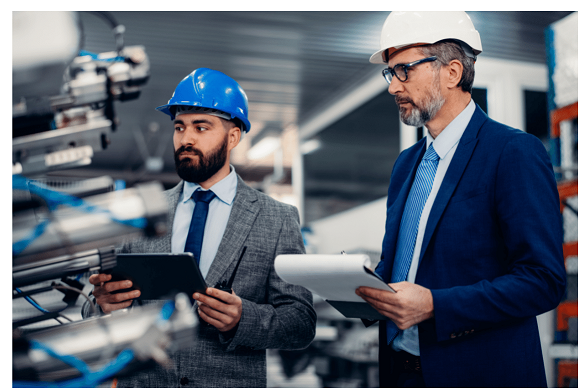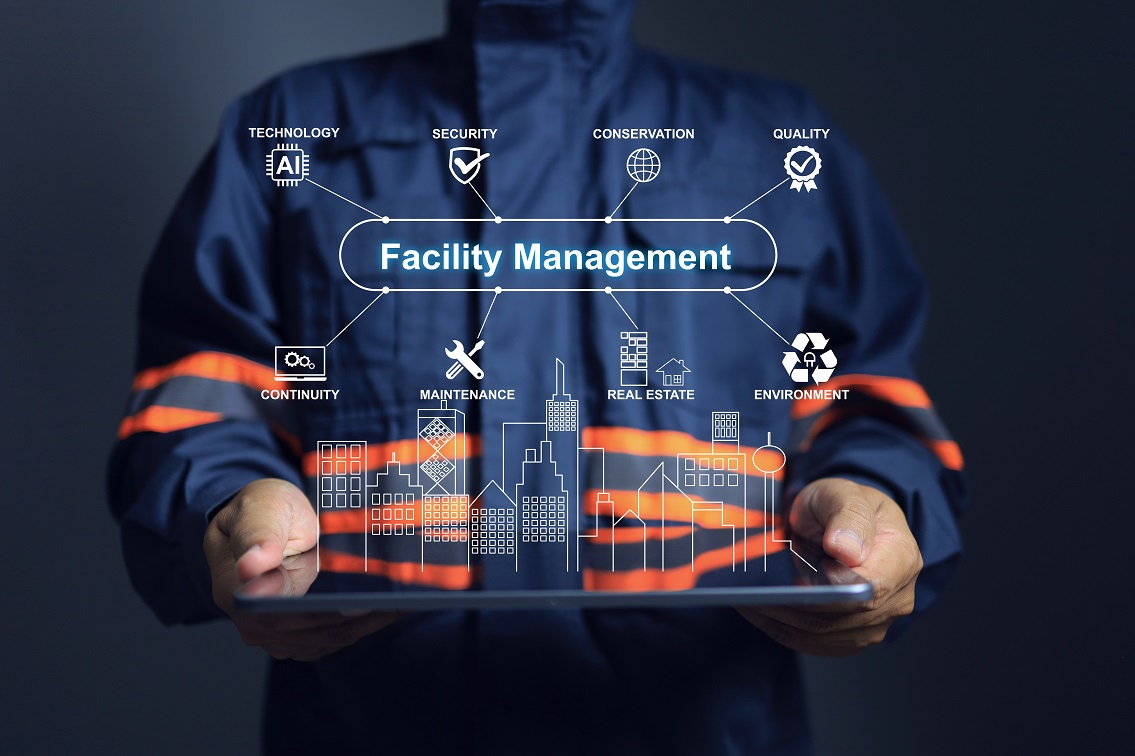The Necessary Guide to Facility Administration: Approaches for Success
Facility administration plays a critical role in the total success of a company, serving as the foundation that supports security, efficiency, and performance. The nuances of efficient center monitoring extend beyond mere logistics and need a thorough understanding of both quantitative and qualitative metrics.
Comprehending Center Monitoring
What comprises reliable facility management? Reliable center management includes the sychronisation of numerous business features to ensure that built environments are safe, effective, and for productivity. Facility Management. It incorporates the concepts of design, design, and service monitoring to create a smooth functional circulation within an organization
Crucial element of facility monitoring include room planning, maintenance monitoring, and conformity with health and wellness guidelines. Space planning concentrates on enhancing the use of physical sources to support business objectives, while maintenance monitoring makes sure that facilities are kept in optimal condition, making best use of life expectancy and reducing functional costs. Conformity with lawful and regulative requirements is crucial, as it safeguards the company versus possible liabilities and boosts its reputation.
Moreover, efficient facility management depends on the strategic usage of innovation, such as Structure Administration Equipment (BMS) and Computer-Aided Facility Administration (CAFM) tools. These modern technologies facilitate real-time monitoring of building systems and improve maintenance processes. Ultimately, a comprehensive strategy to center management not only advertises functional performance yet additionally cultivates a favorable setting for visitors and workers alike, driving overall organizational success.
Trick Techniques for Optimization
Optimizing facility management requires a calculated method that lines up operational experiment business purposes. To accomplish this, the first essential method is the application of integrated technical remedies. Using sophisticated software application systems permits real-time monitoring of center procedures, assisting in data-driven decision-making and boosting total performance.
Secondly, routine evaluations of facility performance are vital. Carrying out regular assessments and audits allows facility supervisors to determine locations that need enhancement, making certain that sources are assigned effectively. This proactive method assists in decreasing downtime and improving service delivery.
Another essential method is promoting cooperation throughout divisions. By motivating open communication in between groups, facility managers can much better align their methods with business goals, resulting in enhanced functional synergy. In addition, involving personnel in training programs promotes a culture of liability and improves their capacity to add to optimization efforts.
Enhancing Safety Procedures
Reinforcing safety and security protocols is crucial for creating a safe and secure atmosphere within centers. An extensive safety and security protocol not just secures visitors and staff members but additionally boosts functional efficiency. To attain this, facility managers should perform normal danger analyses to guarantee and identify prospective threats that appropriate measures are in area.
Training and education and learning are important components of reliable security protocols - Facility Management. Employees must obtain recurring training in emergency situation procedures, equipment handling, and personal safety actions. Regular drills, such as fire emptyings or lockdown treatments, foster familiarity and readiness among personnel
Additionally, clear communication channels should be developed to report security issues immediately. This includes creating an accessible system for employees to articulate prospective hazards or cases without fear of retribution. Leveraging modern technology can improve safety and security steps; get more info for instance, applying monitoring systems and access controls helps keep an eye on facility activities and limit unauthorized entry.
Last but not least, compliance with neighborhood policies and sector criteria is non-negotiable. Regular audits and testimonials of safety procedures make certain alignment with current legislations and ideal techniques. By prioritizing these methods, facility managers can grow a culture of safety that safeguards all stakeholders and ultimately contributes to the company's success.
Improving Work Environment Environment

Ergonomic factors to consider are vital to minimize physical pressure and discomfort. Facility Management. This entails supplying adjustable furnishings, proper lighting, and sufficient area for movement. These modifications can bring about reduced absence and increased task fulfillment
Appearances play an essential role fit the workplace environment. Utilizing color psychology, natural lights, and greenery can cultivate a stimulating and welcoming environment. Attentively made rooms can improve creative thinking and improve total wellness.
Additionally, urging staff member engagement via inclusive decision-making procedures can improve the sense of ownership and belonging. Gathering feedback on workplace renovations and including workers in the design procedure can bring about a much more customized setting that satisfies their demands.
Last but not least, promoting wellness initiatives, such as health cares and relaxation spaces, can additionally contribute to an encouraging workplace culture. By concentrating on these techniques, facility managers can properly boost the office setting, driving both worker satisfaction and organizational success.
Measuring Success in Facilities
Measuring success in facility administration needs an extensive approach that evaluates both qualitative and measurable metrics. Quantitative metrics normally consist of essential efficiency indicators (KPIs) such as space use rates, power intake, maintenance costs, and occupancy levels. These metrics offer a clear photo of functional effectiveness and monetary performance, enabling facility managers to determine areas for renovation and criteria versus sector standards.
Qualitative metrics, on the other hand, focus on individual contentment and staff member interaction. Surveys and comments systems can gauge exactly how well the facilities meet the requirements of owners, assisting to assess the general office atmosphere. This facet is important, as a completely satisfied labor force is usually connected to increased efficiency and retention prices.
To efficiently measure success, center supervisors must also take into consideration incorporating technology, such as developing monitoring systems and data analytics devices, to accumulate and examine pertinent information. Regularly reviewing both sets of metrics allows for a more balanced view of performance and educates critical choices. Inevitably, an effective center administration method rests on a commitment to continuous improvement, ensuring that both operational performances and customer contentment are focused click here on.
Final Thought

Facility administration plays an important role in the general success of a company, serving as the backbone that sustains safety, effectiveness, and performance.Key aspects of center monitoring include space planning, maintenance administration, and conformity with health and safety policies.Moreover, reliable center management relies on the tactical use of innovation, such as Structure Monitoring Equipment (BMS) and Computer-Aided Center Monitoring (CAFM) tools. Ultimately, an extensive method to facility administration not here only promotes operational effectiveness however likewise promotes a positive atmosphere for visitors and employees alike, driving overall organizational success.
Ultimately, a successful center monitoring approach pivots on a dedication to constant enhancement, guaranteeing that both operational efficiencies and user satisfaction are prioritized.